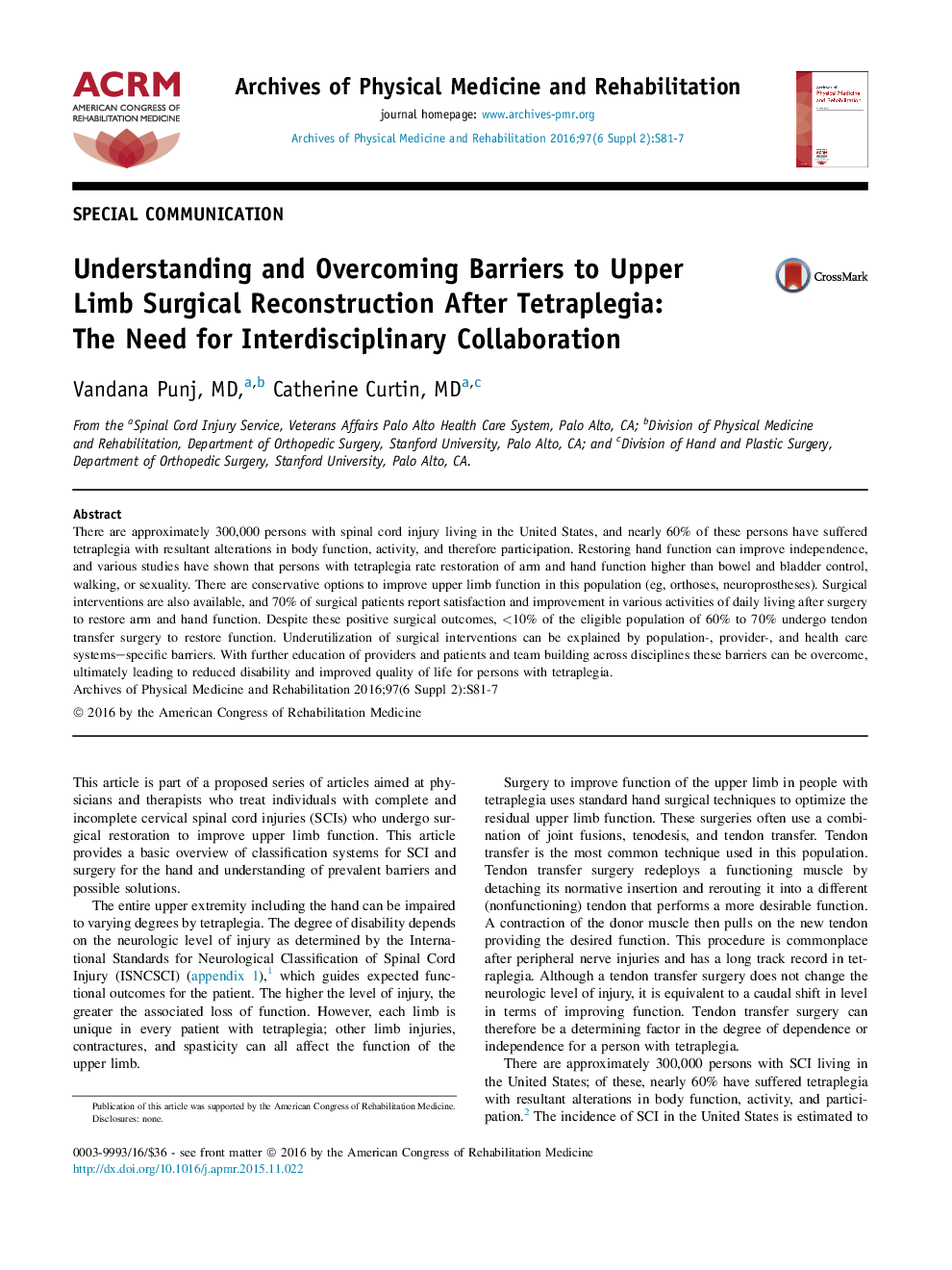| Article ID | Journal | Published Year | Pages | File Type |
|---|---|---|---|---|
| 3447992 | Archives of Physical Medicine and Rehabilitation | 2016 | 7 Pages |
There are approximately 300,000 persons with spinal cord injury living in the United States, and nearly 60% of these persons have suffered tetraplegia with resultant alterations in body function, activity, and therefore participation. Restoring hand function can improve independence, and various studies have shown that persons with tetraplegia rate restoration of arm and hand function higher than bowel and bladder control, walking, or sexuality. There are conservative options to improve upper limb function in this population (eg, orthoses, neuroprostheses). Surgical interventions are also available, and 70% of surgical patients report satisfaction and improvement in various activities of daily living after surgery to restore arm and hand function. Despite these positive surgical outcomes, <10% of the eligible population of 60% to 70% undergo tendon transfer surgery to restore function. Underutilization of surgical interventions can be explained by population-, provider-, and health care systems–specific barriers. With further education of providers and patients and team building across disciplines these barriers can be overcome, ultimately leading to reduced disability and improved quality of life for persons with tetraplegia.
